What does the pair-wise correlation of the NIFTY 50 constituents look like? Is it sticky? (Intro)
What does the high-correlation regime look like? (Correlation vs. Returns & Volatility)
Can correlation states be used for timing? (Correlation Timing)
Invest Without Emotions
What does the pair-wise correlation of the NIFTY 50 constituents look like? Is it sticky? (Intro)
What does the high-correlation regime look like? (Correlation vs. Returns & Volatility)
Can correlation states be used for timing? (Correlation Timing)
The previous post discussed how high correlation environments have fat left-tails. Can correlation states be used for timing?
A quick look suggests that it might not be possible. Both LO (long-only) and LS (long-short) strategies that use the correlation state seem to underperform buy-and-hold.

There was some “crisis alpha” in using correlation for timing during the COVID crash of 2020. However, Buy & Hold ruled the roost both before…

… and after things normalized.

The slightly better drawdown performance of LO in some circumstances might be interesting for levered investors but the unlevered returns of these timing strategies are not much to write home about.
The previous post presented historical NIFTY 50 constituent pair-wise correlation distributions and discussed how high correlation environments persist. How do the 5th-quintile return and volatility look like?

If you focus on the 5, 10 and 20-day pair-wise correlations (T5, T10 & T20), you’ll see large left-tailed returns and high volatility in the 5th quintile compared to the others (1st, 2nd, 3rd & 4th).
Looking at this the other way, T10 – the 10-day pairwise correlation – has this profile:
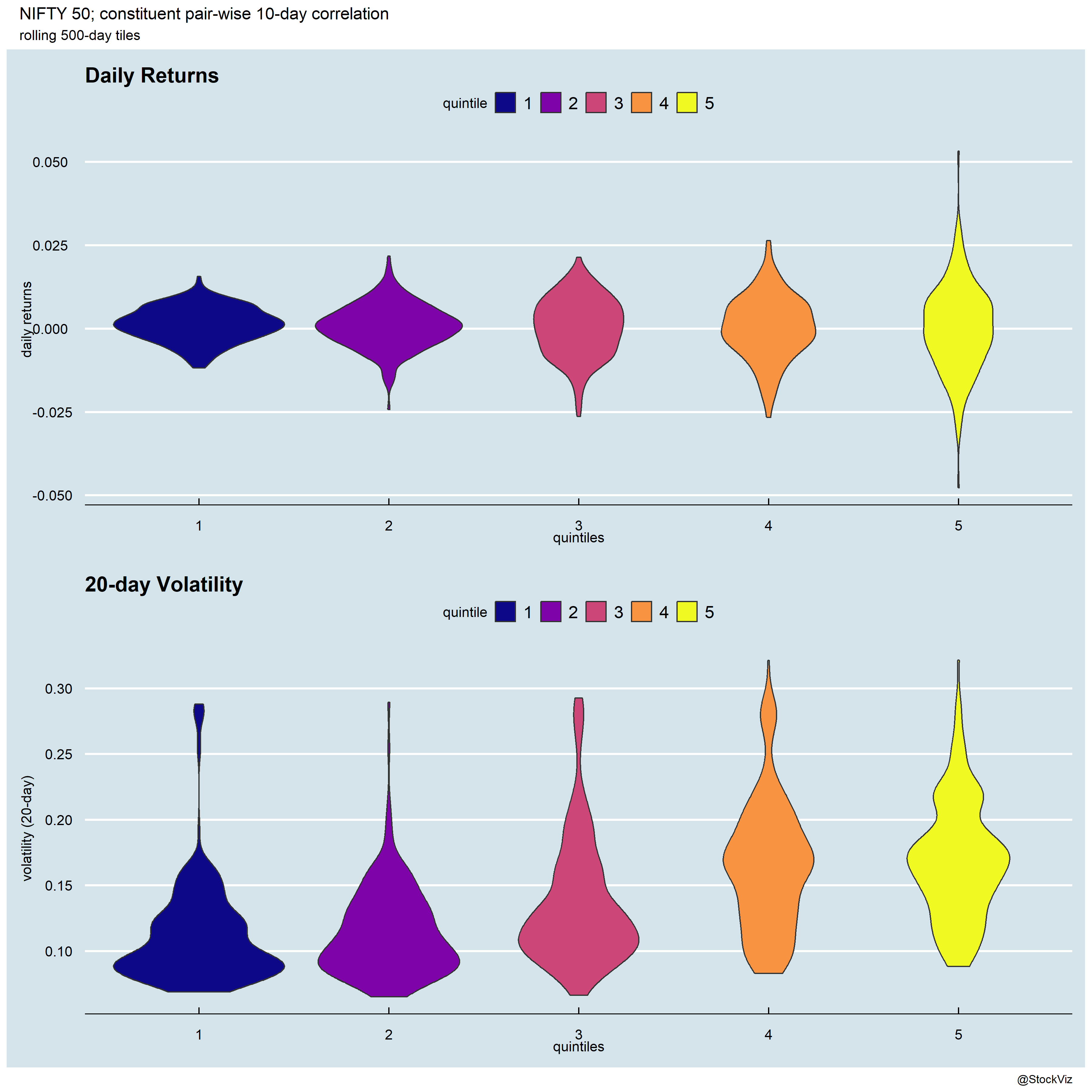
It looks like if you dodge the 5th quintile here, you might be able to boost returns in linear strategies.
Sometimes, it feels like all stocks in an index are moving in the same direction. Very rarely is there full “chaos.” Sometimes, even when there is some dispersion, it is overshadowed by larger moves in a few index heavy-weights. To get some intuition around this, we calculated the pair-wise correlation of the NIFTY 50 constituents since 2015 across different lookbacks, bucketed the median daily correlations into quintiles and plotted them.

If you do an rle, you’ll get an idea about the number of consecutive days spent in each quintile. It looks like quintile 5, representing a highly correlated state, is sort of sticky.

For example, if you zoom into the 20-day lookback distribution, notice how quintile 5 stands out.

It appears that low-correlation environments are actually not that sticky. So, if you see a quintile 5 form, bet on it lasting a few days.
Previously, we discussed how momentum itself trends and how that can be used to manage risk. Using simple moving averages showed promise when it came to some versions of our slow momentum models (see Trending Momentum Models). However, given the faster turnover of our Momos, it wasn’t a suitable approach (see Trending Momo Models).
What if we shorted the NIFTY to hedge against market-risk instead?
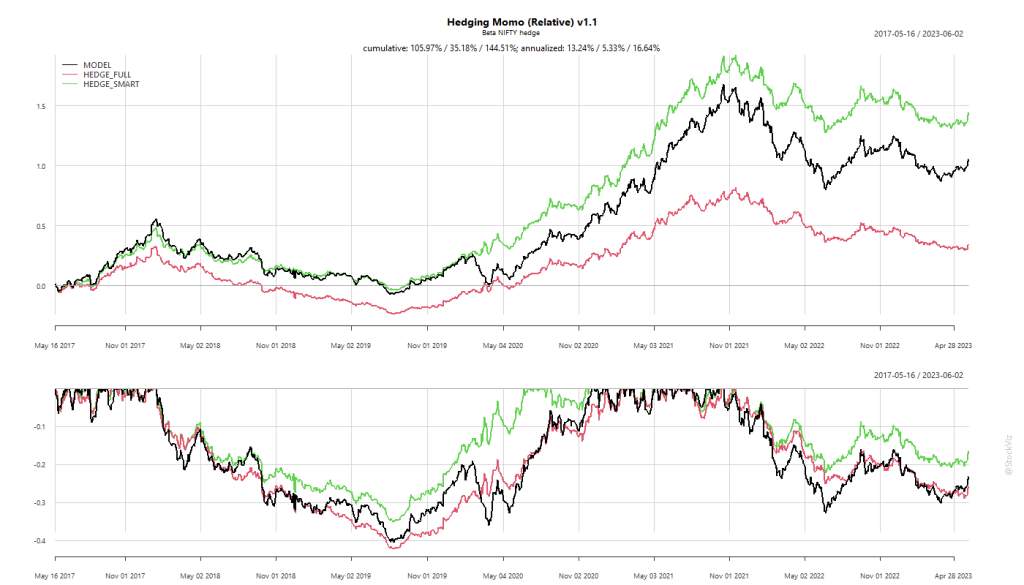
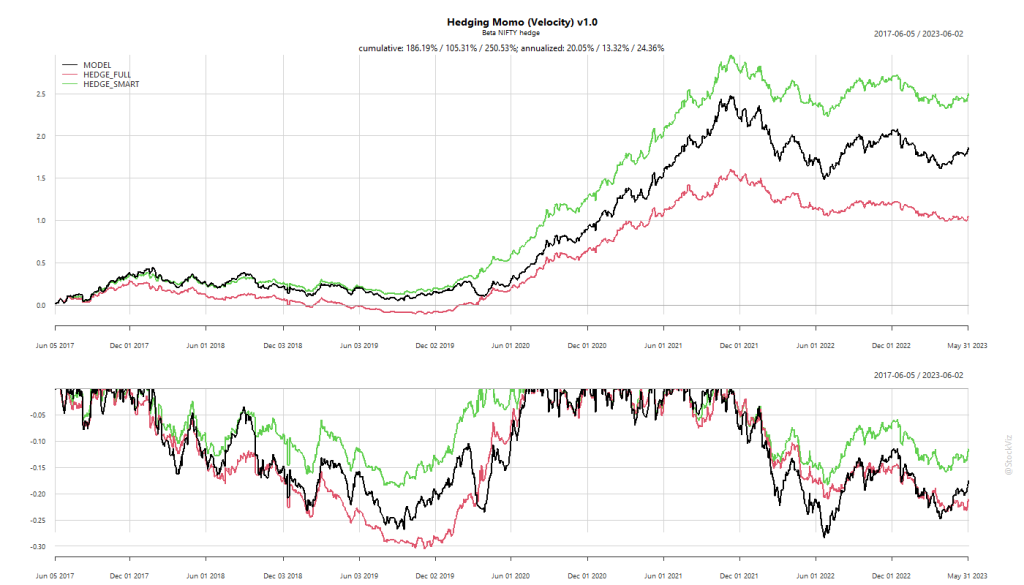
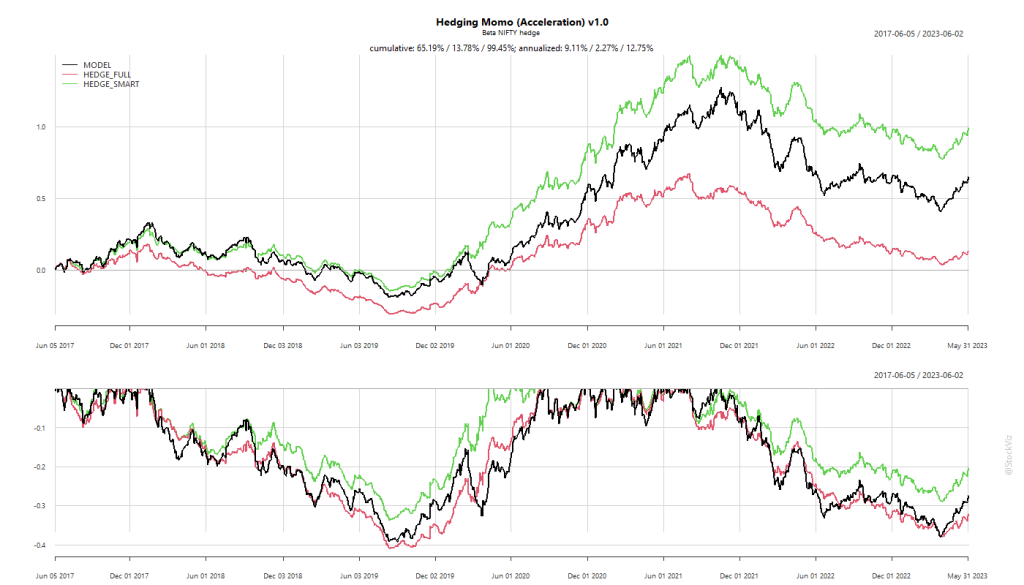
The naïve approach, tagged “HEDGE_FULL” above, shorts the NIFTY in proportion to the rolling beta of the strategy. Turns out, this is a very sub-optimal way to go about it. Hence “HEDGE_SMART”, that tries to minimize the basis risk inherent in this approach, adds about 3-4% to the strategy’s returns (likely eaten away by transaction costs & taxes) and reduces the max-drawdown by a significant amount.
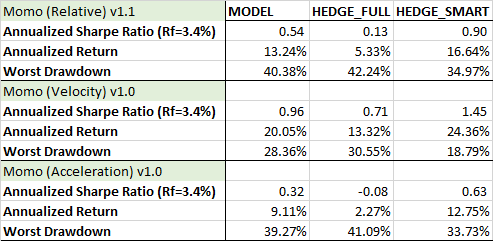
The question is whether the benefit of lower drawdowns is worth the added cost and complexity? In the case of Velocity, it could be.
Related: